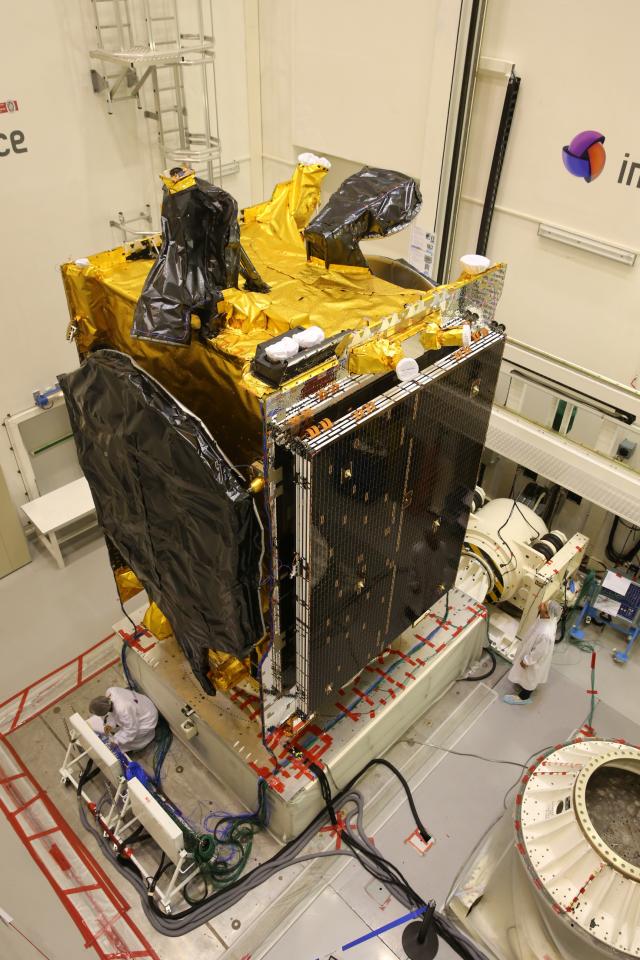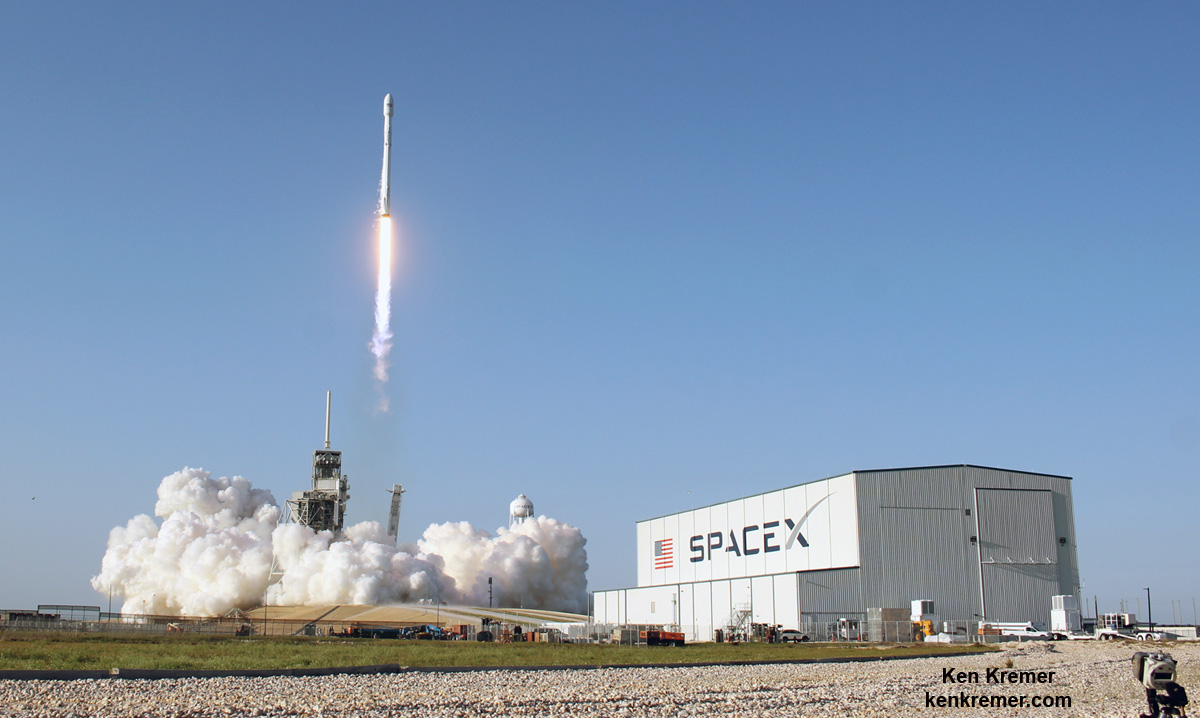
SpaceX conducts successful static hot fire test of recycled Falcon 9 at Launch Complex 39A at the Kennedy Space Center on 2 Oct 2017 as a gator gazes from Playalinda waterways, FL. Liftoff is slated for 7 Oct 2017 with SES-11/EchoStar 105 telecommunications comsat. Credit: Ken Kremer/Kenkremer.com
PLAYALINDA/KENNEDY SPACE CENTER, FL - SpaceX is targeting Saturday Oct. 7 for blastoff of the SES-11/EchoStar 105 commercial telecomsat following a successful static fire test of the first stage engines of the 'used' Falcon 9 booster, as a Florida Space Coast gator gazed on in wondrous glee as the engines fired away Monday afternoon, Oct. 2.
The brief engine test took place at 430 p.m. Monday Oct. 2, with the sudden eruption of smoke and ash rushing into the air over historic pad 39A on NASA's Kennedy Space Center during a windy and overcast afternoon - as I witnessed from the Playalinda Beach causeway FL with the jet black gator just feet away in the inland waterways.
The static fire test lasted approximately three seconds. The test is routinely conducted by SpaceX engineers to conform the rockets readiness launch.
In this case the SpaceX Falcon 9 will refly and relaunch as a recycled rocket.
"Static fire test of Falcon 9 complete," SpaceX confirmed via tweet soon after the hotfire test was conducted.
"Targeting October 7 launch of EchoStar 105/SES-11 from Pad 39A in Florida."

SpaceX conducts successful static hot fire test of 3rd previously flown Falcon 9 booster atop Launch Complex 39A at the Kennedy Space Center on 2 Oct 2017 as seen from Playalinda causeway, FL. Liftoff of recycled rocket is slated for 7 Oct 2017 with SES-11/EchoStar 105 telecommunications comsat. Credit: Ken Kremer/Kenkremer.com
The private SES-11/EchoStar 105 mission will launch on a 'flight-proven' booster and is slated for a dinnertime lift off on Oct. 7 at 6:53 p.m. EDT from seaside Launch Complex 39A at NASA's Kennedy Space Center in Florida, carrying the SES-11 telecommunications payload.
SpaceX will also attempt to recover this booster again by soft landing on an ocean going platform prepositioned in the Atlantic Ocean- about 8 minutes after blastoff.
EchoStar 105/SES-11 is a high-powered hybrid Ku and C-band communications satellite launching as a dual-mission satellite for US-based operator EchoStar and Luxembourg-based operator SES.

SES-11/EchoStar 105 commercial telecomsat. Credit: SES
This is only the third recycled SpaceX Falcon 9 ever to be launched from Pad 39A.
SES was the first company to ever fly a payload on a 'flight-proven' Falcon 9. The SES-10 satellite lifted off successfully this spring on March 30, 2017.

Reflown SpaceX Falcon 9 soars to orbit with SES-10 telecomsat from historic Launch Complex 39A at NASA's Kennedy Space Center in Florida at 6:27 p.m. EDT on March 30, 2017. Credit: Ken Kremer/Kenkremer.com
The second reflown booster successfully launched the BulgariaSat-1 a few months later.
Pad 39A has been repurposed by SpaceX from its days as a NASA shuttle launch pad.
During Monday's static fire test, the rocket's first and second stages are fueled with liquid oxygen and RP-1 propellants like an actual launch, and a simulated countdown is carried out to the point of a brief engine ignition.
The hold down engine test with the erected rocket involved the ignition of all nine Merlin 1D first stage engines generating some 1.7 million pounds of thrust at pad 39A while the two stage rocket was restrained on the pad.
EchoStar 105/SES-11 provides EchoStar with 24 Ku-band transponders of 36 MHz, marketed as EchoStar 105, while it provides SES with a C-band payload of 24 transponders, marketed under the name SES-11, says SES. EchoStar 105/SES-11 replaces Ku-band capacity for AMC-15 and C-band capacity for AMC-18 at SES' well-established 105 degrees West orbital slot.
SES-11 is the 47th satellite based on Airbus's highly reliable Eurostar E3000 platform.
The engine test was carried out without the expensive payload attached to the top.
Following the hot fore test, the rocket is rolled back to the processing hangar located just outside the pad perimeter fence.
The 5,200 kg satellite will now be integrated with the rocket for the planned weekend liftoff.
The solar arrays generate a spacecraft power of 12 kW.
Watch for Ken's continuing coverage direct from onsite at the Kennedy Space Center press site and Cape Canaveral Air Force Station.
Stay tuned here for Ken's continuing Earth and Planetary science and human spaceflight news.
Ken Kremer
















